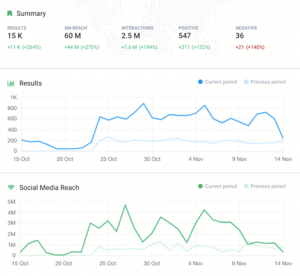
Attracting and recruiting top talent in today’s competitive job market is a challenge for every organization. But for companies hiring for high-volume positions such as call centers, talent selection is even more challenging. Implementing pre-hire assessments and using the data they provide helps identify top performers. However, it is crucial for companies to establish a strategic talent selection process to optimize the value of these assessments and to ensure they result in measurable business outcomes.
How Improving the Talent Assessment Process Led to a 49% Reduction in Attrition
FurstPerson understands the demands many call centers face when it comes to quality talent selection and hiring top performers. We recently worked with a Fortune 500 insurance company to create a tailored talent assessment solution for its customer call center. The company had several primary concerns, including high attrition rates and a low Net Promoter Score. Our goal was to improve job performance and quality of hire by implementing a targeted pre-hire assessment based on job profile analysis.
Through this process, we were able to improve this company’s 0-90 involuntary attrition rate by 49% and voluntary attrition rates by 16%. Additionally, the company saw significant improvements in adherence, first call response rates, quality, average handle time, and Net Promoter Score.
While every call center is different and requires unique job-specific analysis, FurstPerson used the following method to help our client choose the right talent assessment tools to develop a winning talent selection strategy.
1. Create a Clear Definition of Job Description
The first step in creating a talent selection strategy is to define each job profile clearly. When working with the insurance company, FurstPerson conducted a series of surveys with top-performing employees in two specific roles: customer service and claims. The employees surveyed understood the demands of the job and the skills necessary to be successful at this company. We discovered that while the qualities necessary for customer service and claims roles were similar, there were key differences between the two. The job analysis showed the following skills, abilities, and motivations that were measured for each position:

2. Identify Assessment-to-Metric Outcomes
After identifying the necessary skills, abilities, and knowledge required for each role, FurstPerson worked with HR and operational leadership within the company to determine the business impact that could be achieved with the right pre-hire assessment tools. Together, we identified three test categories that allowed us to translate the contact center jobs into measurable areas of opportunity:
- Personality Assessments: These assessments are good predictors of an applicant’s on-the-job motivation. The presences of the personality traits necessary for on-the-job success can be tied directly to metrics like quality, attrition, adherence, average handle time, and Net Promoter Score.
- Problem-Solving Assessments: This type of assessment can predict a candidate’s ability handle difficult tasks and solve customer complaints by assessing specific qualities, including working with numbers and workplace communication.
- Work Sample / Simulation: This type of simulation assessment shows how a candidate will actually perform by measuring core competencies like multi-tasking and service orientation, among others.
3. Review and Revise
The last step of the process was to review and revise each hiring profile. Once the hiring profiles for each job were developed and mapped back to performance improvement, FurstPerson implemented version 1.0, which showed remarkable initial improvements in several areas, including attrition, first-call resolution (FCR), average handle time (AHT), and employee satisfaction and engagement via employee Net Promotor Score (ENPS). Additionally, we saw iterative improvements from version 1.0 to version 2.0 after a follow-up business review that featured more targeted assessments based on additional analyses.
The results of both assessments, as well as projected improvements, can be seen in the chart below:

(150)







